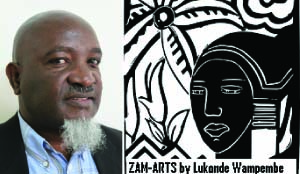 We take as a fulcrum of our discourse this week looking back to that most heinous period in Africa’s history—the African slavery and the slave trade.
We take as a fulcrum of our discourse this week looking back to that most heinous period in Africa’s history—the African slavery and the slave trade.
A good deal of records are heaped up in the archives about this subject which overwhelmed the African continent for over 400 years and during which about fifteen million Africans reached the Americas and the West Indies to work on the plantations of slave- masters to produce— among other crops— cotton, sugar and tobacco.
Historians link up this period to the colonial dispensation and neo-colonialism which followed hot on the heels and much later, western capitalism.
Recounting the history of the slave trade, in a short article such as ours, it is only reasonable that we recall an African proverb quoted by Chinua Achebe in a collection of lectures called ‘Home and Exile’which affirms that until the lions produce their own historian, the story of the hunt will glorify only the hunter.
Our interest in this conversation is to show the contribution of African chiefs, nobles, headmen and the ruling class to the slave-trade.
In a short but informative research paper, ‘West Africa and the Atlantic Slave-Trade’, Walter Rodney provides insights into the slave trade that changed the history of our African continent altogether. The discussion will also include Simon Mwansa Kapwepwe’s radical thoughts in his epic book of poetry ‘Africa we can forgive but we cannot forget’ written in his vernacular tongue, Bemba. There is a sense of collusion, depth and diversion of ideas in the two historians’ narratives of the hunt especially from the standpoint of a literally historian,which Kapwepwe was, and an academician, Rodney. In his prologue to his book Kapwepwe states thus:
Ili buku nalembelaa bena Africa bekabeka,
Lelo uulefwaya kuti alengelamo kulila
Takankamike kukanwa.
Pantu icine caliwama ukucila ubufi
(I write this book for Africans only
But whoever wants can take a gaze in it
As long as there is no grimace of faces
Truthfulness is better than falsehood)
In so far as Kapwepwe is concerned the battle lines are drawn and he makes no apology for spelling out his intentions. The boundary lines, as it were, are drawn not only for the readership in view of what he sets out to write about but also by the means of expressing his ideological stand; the book,which is largely untranslatable, is written in his mother tongue, Bemba and, therefore, almost entirely limited to those who understand it.
The untranslatability of the book arises from its rich idiosyncrasies, varied language nuances and profound idioms of the vernacular tongue used by the seasoned ing’omba, or griot.
In this vein, our earlier proverb is justified; the story of the hunt is derived from the hunter’s preferential experience. The writer, without much ado, sets outto eulogy Africans and their impeccable history:
Ilyo bawishikwa Abraham tabalabako
Ilyo abenafyalo bonse balelya utumpolyo
Abana bandi ninshi bali mu musumba
No kusamaa basama mu nsalu ishabeka.
Kabili abantu abaisula no bukata
Ilyo ubulaya bonse bwali mumfifi no bututu
Abana bandi baile kukubafunda
Nokuteka mu Italy (AD 193)
Bafundile amalango (by Aesop)
Bafundile amapendo
Bafundile ukulemba kwamubwipi
Kuti nafwaya ukwishiba uushatala
Afundwa na Africa.
(Before Abraham’s father came into being
When foreigners survived on fruits/roots
My children lived in the cities
Resplendent in gleaming clothes.
They were people replete with dignity.
When Europe was in darkness and ignorance
My children went there to teach them
And they ruled in Italy (AD 193)
They taught philosophy (by Aesop)
They taught Geometry
They taught Shorthand
I’d like to know who has never been taught
By Africa.
In his hunter’s story Rodney like Kapwepwe also attests to the injustice and cruelty the Africans suffered at the hands of white slave traders from Europe and the Americas.
His account of slavery covers mainly the Western African coast where the Portuguese appeared around the fifteenth century and took slaves to Portugal and Spain. The European capitalists also made profits as they provided labour to the Americas and the Caribbean where African slaves worked in the mines and plantations.
But the story does not end there because according to Rodney the African end of the slave trade was equallyimmoral. Although some parts of Africa like Liberia and Ivory Coast were not so adversely affected, in areas where slave trade took place the Africans where conduits of slaves to the white merchants. There were several methods by which the trade proceeded. Forts were established, where ‘factories’ emerged to preserve both the goods with which slaves were exchanged as well as places (barracoons) to keep slaves in stock for oncoming salve- ships. Kapwepwe illustrates this grim period in a much more artistic and graphic manner:
Africa-Nasebana!
Ululumbi lwandi lwaya nashelefye
Ngo muntu yaweyawe!
Balanshita kwatilisabi pa mushika!
Balanshita namaluti kwati ndi mbushi!
Balanshita mu bulungu matombo
Balanshita mu mucele kwati ndi nkoko
Balanshita mu mulilo wa pa mfuti ulufwataki.
(Africa- I am done for!
My fame is gone, I am but nothing
I am like a nonentity!
I am bought like fish at the market!
I am boughtwith gun powder like a goat!
I am bought with beads, matombo
I am bought with salt like chickens
I am bought like gun powder for a muzzle loader.)
In the initial part of the commerce, slaves were obtained from the coast lines but later they came from further inland. Slaves travelled for miles on end and got to the coast tired and weak.
As a result many died, some were killed by the slave traders while others perished en route to the ‘New World’.
Many of the slaves were sold by their own people. Some tribes were fairly organised politically and socially so as to set the African rulers quite apart from their people and the latter were normally poor and could easily be sold in exchange for guns to protect the ruling class from other rival tribes. The slave traders exploited the tribal divisions—just as the capitalists still do today— to exploit their rivalry for more human cargo.
In a divide and rule approach, slave traders would set the tribes against one another only to intervene with superior military power and cunningly acquire more slaves from both sides. Rodney points out that the Mande- speaking and the Mandingas were the main suppliers of slaves to the white traders.
The most exploiting tribe were the Fulani who became Muslims and would attack non-Muslims for slaves. Being pastoralists they also used the slaves to work for them.
And so were the Akan-speaking and the Ashante people of Ghana and the Foni State of Dahomey. Dahomey had even an interesting case of a battalion of women warriors trained to conduct raids for slaves. In areas where the tribes lived in‘stateless societies’ like among the Ibos of eastern Nigeria professional slave raiders came together to form bands that would attack other tribes for slaves and in turn sell them to ship-owners on the coast.
The class divisions worked against the weaker members of the society as could be seen in matters of witchcraft and marriage disputes which resulted in selling more slaves.
Later in the eighteenth century some African rulers sent their children to study in Europe while others sent them to learn the white man’s language on the coast.
In Angola the children of slave traders called muletto became vicious traders in the increasingly commercial trade in humans.
It has been argued that the participation of Africans in the slave trade was because the situation was helpless in the face of imperial power; so much so that in cases where certain chiefdoms fought against the Europeans it was almost always a losing battle.
Whatever the case, the evils of the slave trade as seen from the stories of the two hunters left an indelible mark on the African continent to the extent that as the slave trade was ending European powers were already engaged in the ‘Scramble for Africa,’ to set up colonial empires.
Kapwepwe uses untranslatable Bemba idioms of intrigue, theft, pride, plunder, deceptions and destruction by the European actors in Africa’s human cargo:
Lunkuntwe shilupuma mpanga
Shimantanga we watangalila
Ubufumu na bulumbwe
Kanyelele mufukila kubili
Kwindi we ulya no kuputilisha
Cenga bupele we wawalaile
Infumu umusengele wacela
Sondashi linso lyankokomushishakalele
Chitapankwa uutapa ne shishili shakwe,
Kapopo mukali wapwa bantu
There is a thread of mockery running through these idiomatic expressions which could, in fact, be used to genuinely shower encomiums on Bemba chiefs. But here is a weekly reflection for the reader on two stories of the hunts.
–ofpoetspoems@gmail.com–






